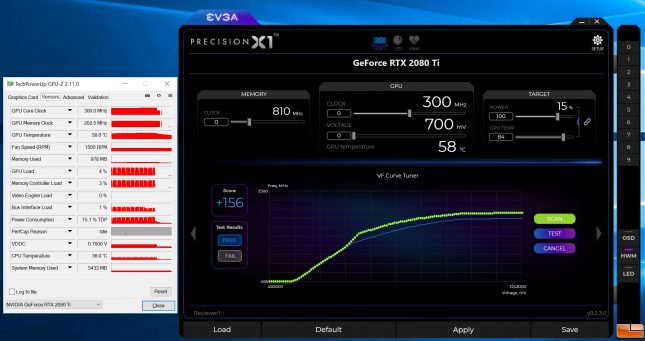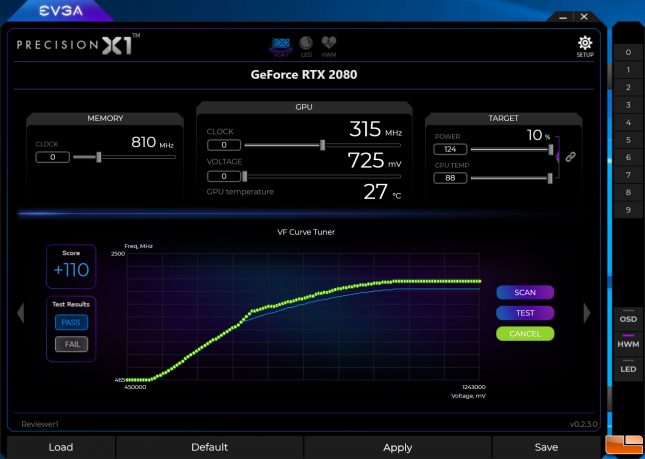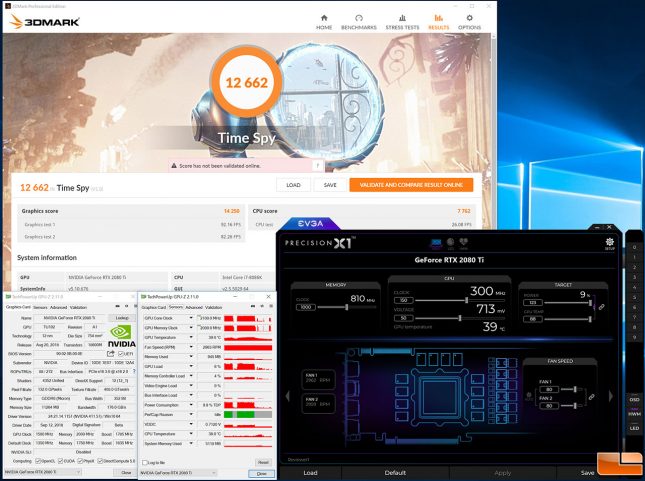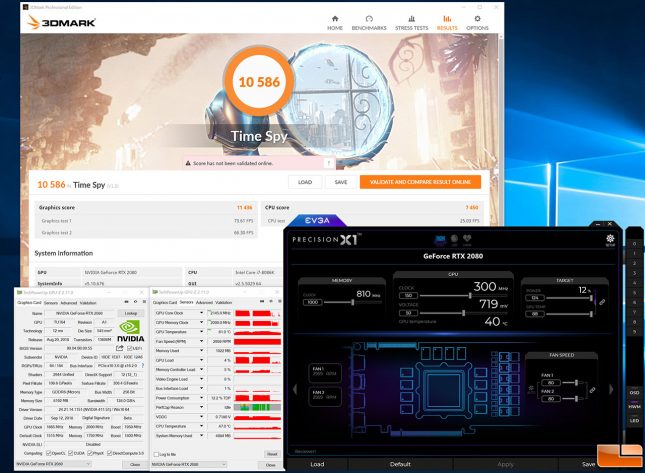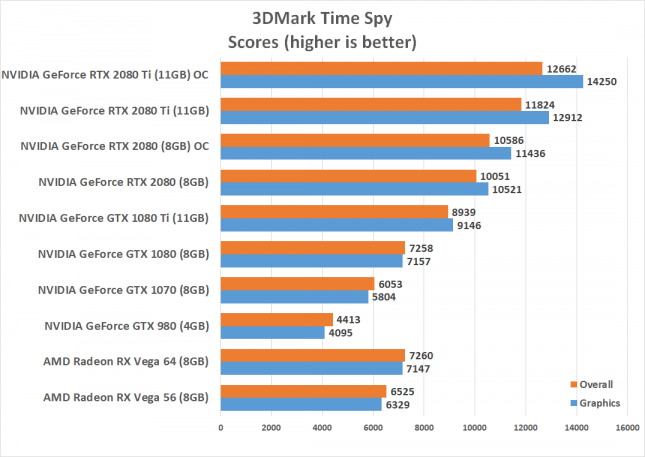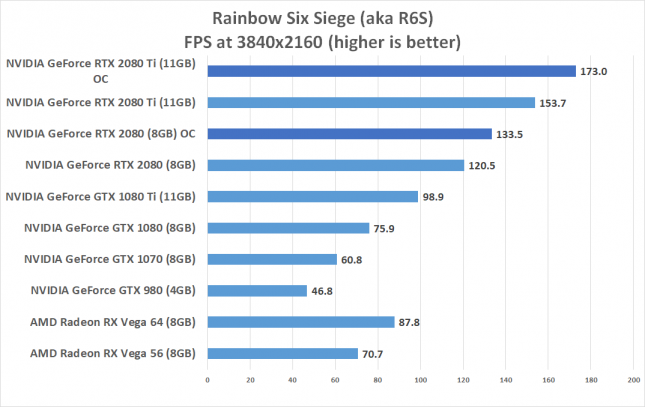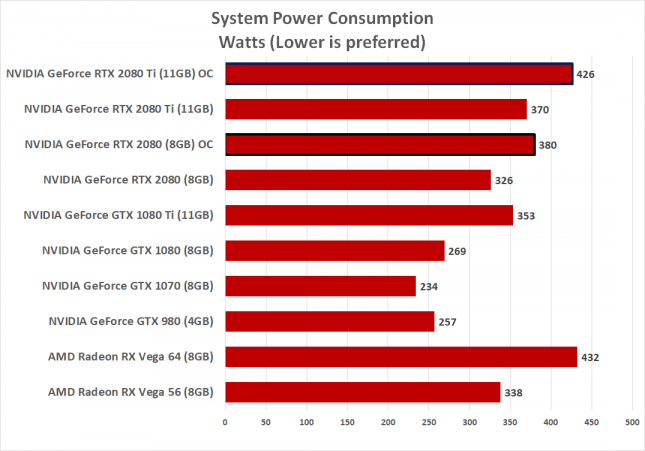NVIDIA GeForce RTX 2080 Ti and RTX 2080 Benchmark Review
RTX 2080 Ti and RTX 2080 Overclocking
Overclocking the NVIDIA GeForce RTX 2080 Ti and RTX 2080 is easier than ever thanks to NVIDIA Scanner. This new one-click overclocking tool uses an intelligent testing algorithm and specialized workload designed to help find the maximum, stable overclock on their cards. This process takes about 15 minutes and always you to walk away and come back to find out what a good safe max overclock could be. This eliminates trying multiple overclocks and checking stability. When NVIDIA Scanner is done, the Scanner will have found the maximum stable overclock throughout the entire frequency and voltage curve for your specific card. The only issue with the NVIDIA Scanner is that it doesn’t touch the memory, so this is only for the core clock speeds.
We used the NVIDIA SCanner in EVGA Precision X1 and found the core could be overclocked an extra 156 MHz on the GeForce RTX 2080 Ti Founders Edition card. The GPU-Z screen on the left shows the small tests that are done to find the max speed.
The NVIDIA GeForce RTX 2080 Founders Edition topped out at an additional 110 MHz.
We ended up manually overclocking the 2080 Ti to +150 core and +1000 memory and while gaming the core clock was hitting up to 2100 MHz and the GDDR6 memory was running at 8000 MHz. We gave out cards a slight 50mV bump on the core voltage.
We were also able to run the RTX 2080 to +150 core and +1000 memory and while gaming the core clock was hitting up to 2145 MHz and the GDDR6 memory was running at 8000 MHz. So, we were hitting 2.1 GHz or better on each of our cards after overclocking.
This brought a nice performance boost in 3DMark Time Spy as the overclock boosted performance by 7% on the RTX 2080 Ti and 5% on the RTX 2080.
In Rainbow Six Siege we saw performance increases of 12.6% on the RTX 2080 Ti and 10.8% on the RTX 2080.
Overclocking does increase the power draw though as we saw right around a 55 Watt increase on both cards with the overclock that we used. The GeForce RTX 2080 Ti overclocked with a 50mV increase on the core amazingly used less power than a stock AMD Radeon RX Vega 64 reference card.

